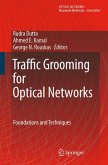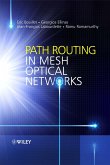The book starts with an overview of optical networking, including an introduction to state-of-the-art optical networks. The second chapter covers legacy optical equipment and the new optical-bypass technology, with an emphasis on the architectural impact of the equipment. For example, the discussion covers how the various types of equipment affect the economics and flexibility of the network.
One of the challenges of optical-bypass technology is that it requires sophisticated algorithms in order to operate the network efficiently. Chapters three, four, and five describe such algorithms, where the focus is on techniques that have been proven to produce efficient results in realistic carrier networks. The design and planning strategies described in these chapters are readily implementable. All of the algorithms presented scale well with network size so that they are suitable for real-time design.
Chapters six and seven focus on two important aspects of optical networks, namely efficient bundling of the traffic and protection of the traffic. Rather than cover every aspect of these two subjects, the book focuses on how best to perform bundling and protection in the presence of optical-bypass technology. Again, the emphasis is on techniques that have proven effective in real network environments.
The final chapter explores the economics of optical networking. Several studies are presented that offer guidelines as to when and howoptical-bypass technology should be deployed.
The code for some of the routing algorithms is provided in the appendix, which adds to the utility of the book.
Dieser Download kann aus rechtlichen Gründen nur mit Rechnungsadresse in A, B, BG, CY, CZ, D, DK, EW, E, FIN, F, GR, HR, H, IRL, I, LT, L, LR, M, NL, PL, P, R, S, SLO, SK ausgeliefert werden.









